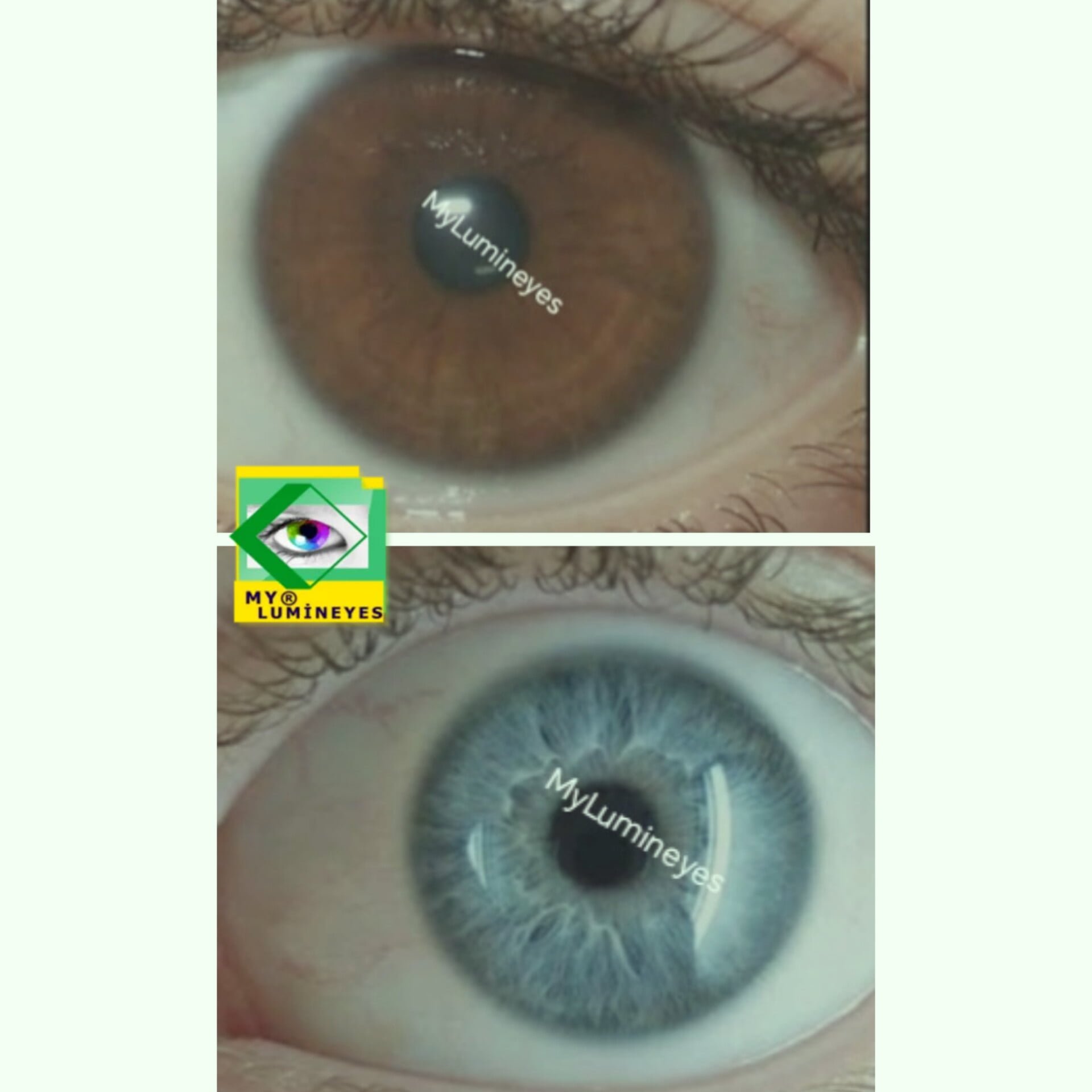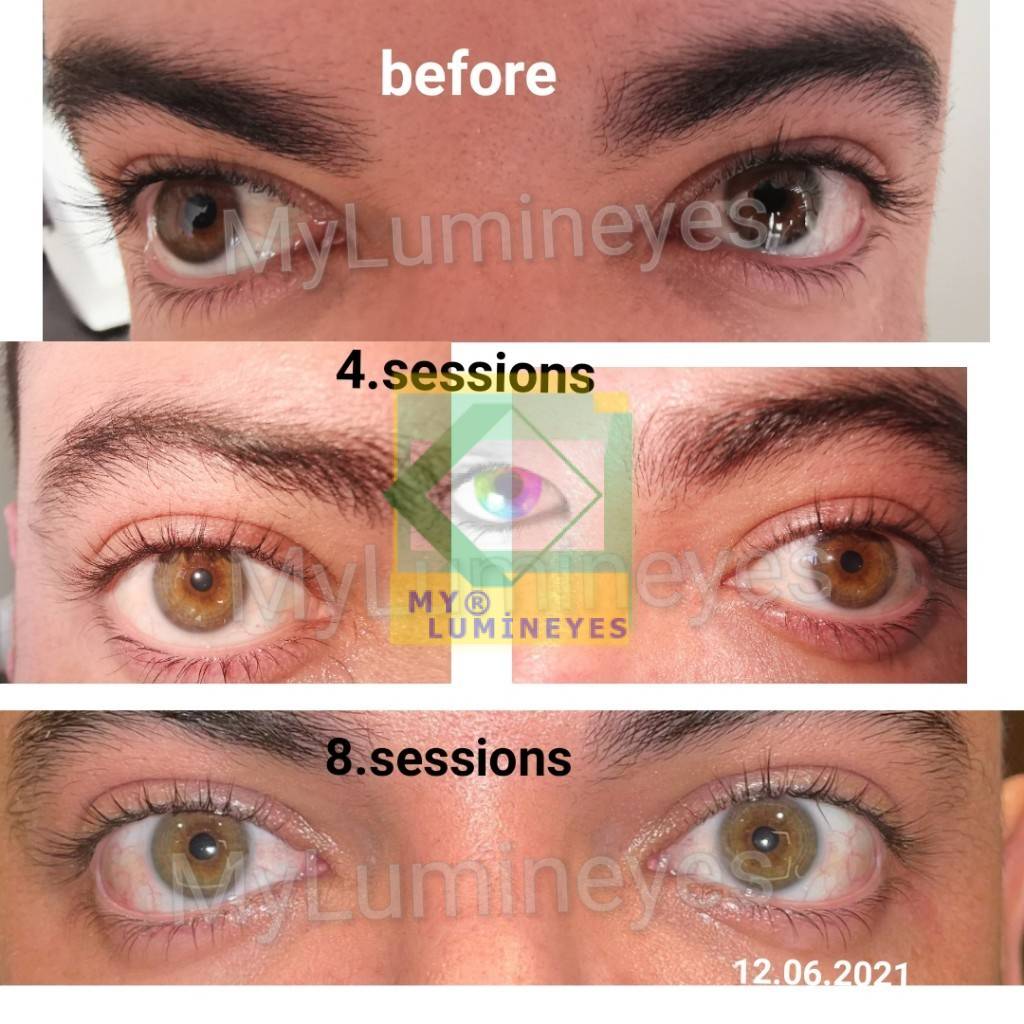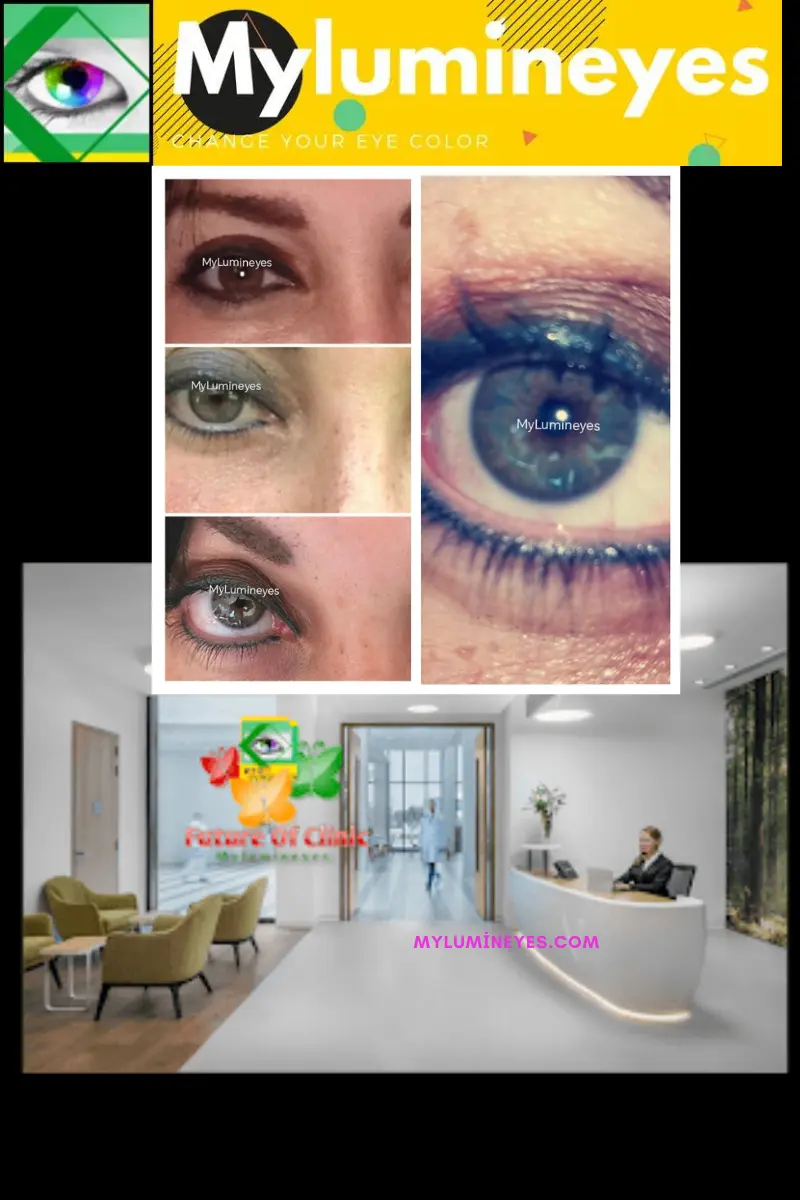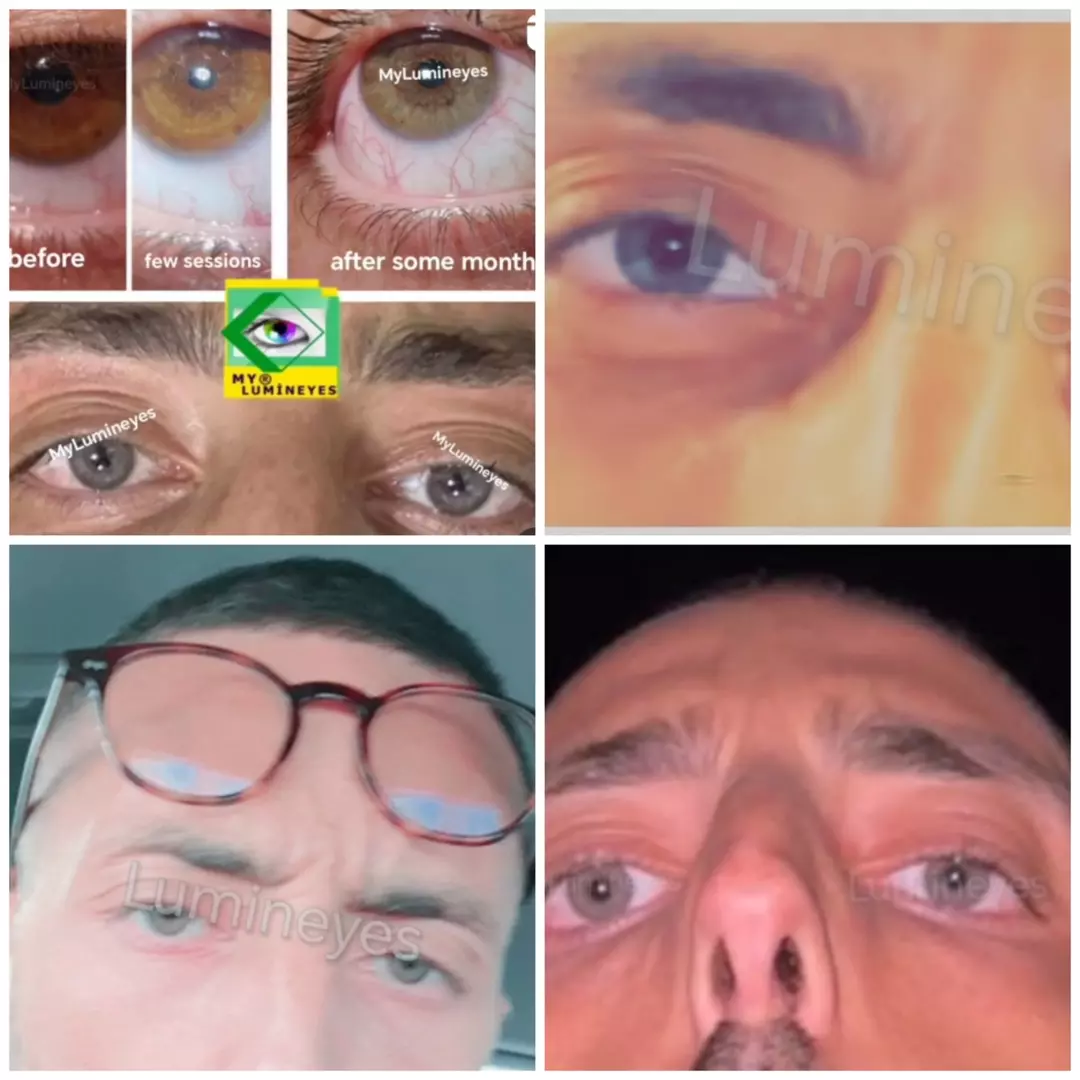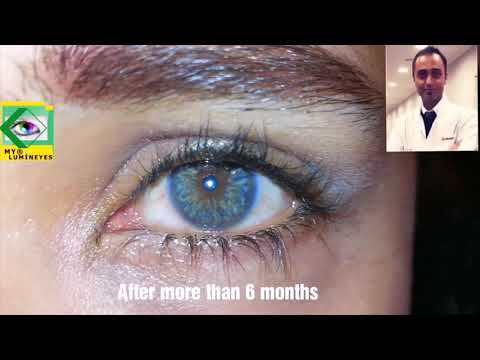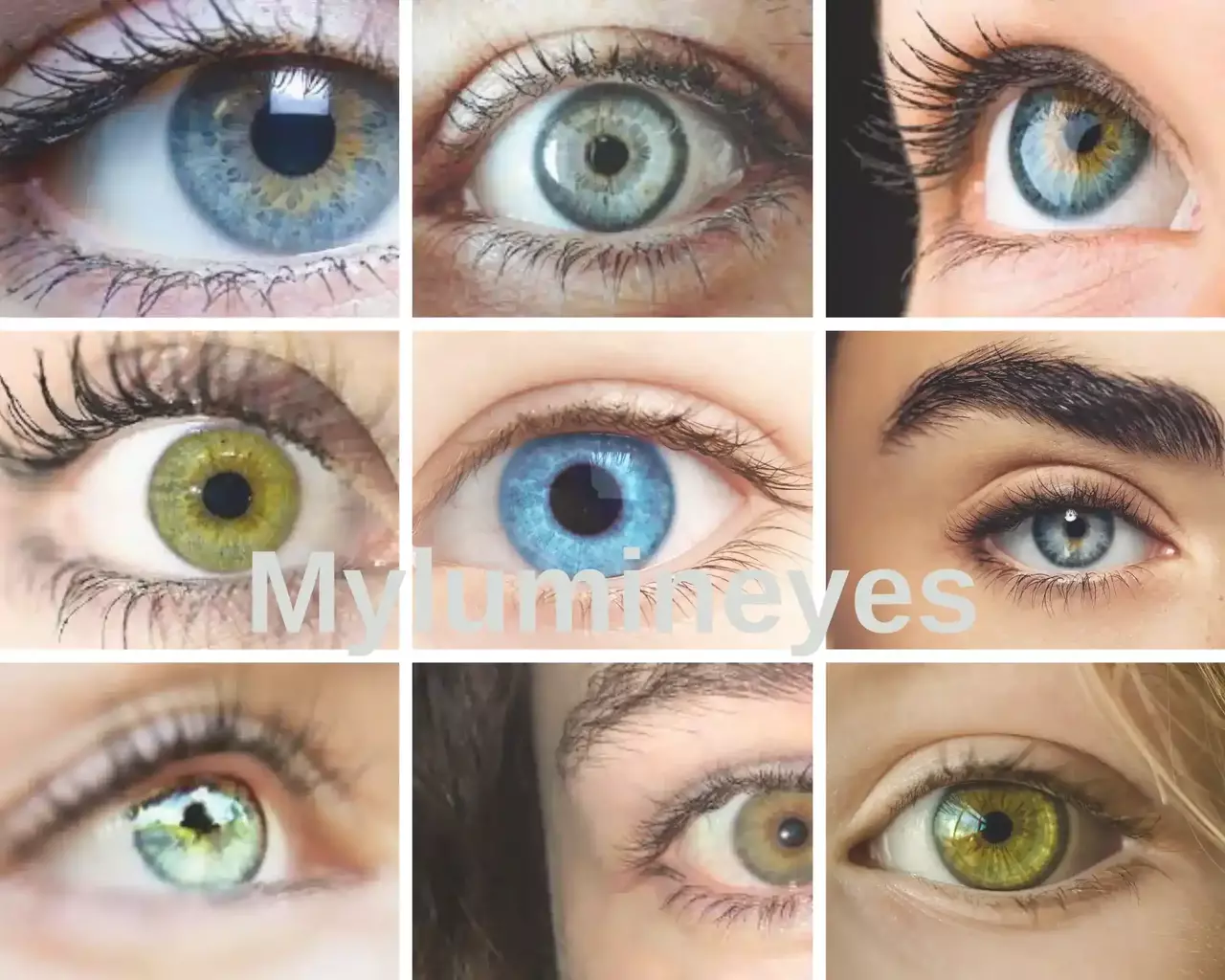Heterochromia Treatment with laser-Causes of Heterochromia
Have you ever seen a person with eyes of varying colors? This condition is referred to as heterochromia. What is heterochromia iridum? Heterochromia is the presence of different colors in eyes or irises. It is typically found in the iris, but can occasionally be observed in the hair and skin. Heterochromia is caused by a melanin deficiency or after some conditions. This could be a result of genetic mosaicism, chimerism, disease, or trauma. Thare are 3 types pf heterochromia : central heterochromia,complete heterochromia and sectoral heterochromia. According to this the first successful laser eye surgery treatment of heterochromia done by Dr.Mete and this treatment started the cosmetic eye color change process in the world.
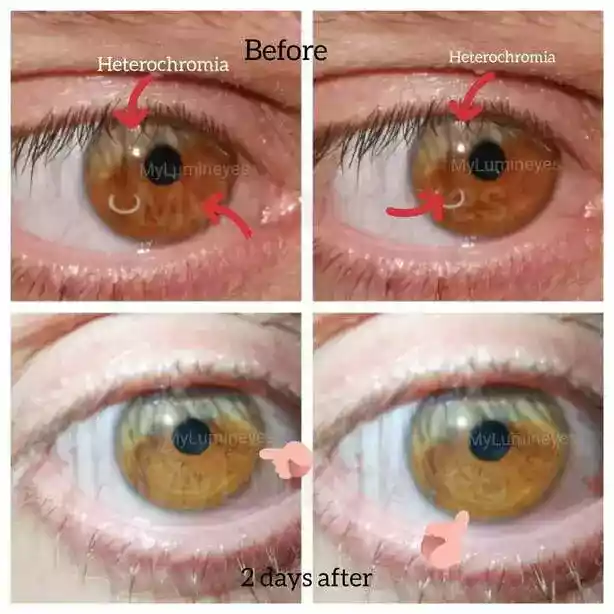
Heterochromia iridum
The main things that determine the color of a person’s eyes are the amount and location of pigment in the tissues of the iris. If a person’s irises have more than one color, this is usually a sign of a condition called heterochromia iridum or heterochromia iridis. Since different types of heterochromia can affect both the epidermis and the hair, appending the suffixes iridum or iridis shows that the condition solely impacts the eyes. Heterochromia iridum is an eye disorder that causes color variations in the iris, the pigmented portion of the eye.
That can occur inside or outside of a single eye. What’s Heterochromia iridum? Heterochromia is a term for the condition in which one or both iris have distinct hues. Complete heterochromia is characterized by the presence of two distinct iris colors, while segmental heterochromia refers to the presence of two or more distinct iris colors in a specific area of the eye, and central heterochromia refers to the presence of an iris in which the center color is different from the peripheral ring.
How do heterochromia iridium and iridis vary from one another?
It is possible to have the condition known as heterochromia iridis, in which the iris of one eye is a different color than the iris of the other eye. The iris is the part of the eye that covers the pupil’s center and gives the eye its color. The iris can give the eye a variety of colors, including blue, green, and others. brown, yellow or golden, gray, or other colors ,the condition known as heterochromia iridis should not be confused with heterochromia iridium.
Heterochromia is when a person has two eyes that are different colors or irises that have more than one color.
More precisely, it refers to the pigmented region encompassing the pupil, the iris. There are various varieties and causes of heterochromia, and its appearance can range from barely apparent to extremely pronounced. Some individuals are born with sectoral or central heterochromia, while others develop the condition as infants or later in life. It may be a genetic oddity for some people, but it can also result from trauma or illness. Heterochromia iridis is a rare disorder where the colors of the two eyes are distinct. Heterochromia iridis can be inherited or congenital. Hereditary heterochromia iridis could be linked with other eye or systemic disorders. Typically, heterochromia is the result of an eye illness. If the disease is acquired, the treatment may target the root cause of the problem. Laser eye color change therapy may be used for aesthetic purposes. The majority of instances of heterochromia iridis are moderate or easy.
Complete,Central or Sectoral Heterochromia is a treatable anomaly.
The quantity of melanin in the iris determines whether our eyes are blue, green eyes, brown, or hazel. While brown eyes contain the most melanin, blue eyes contain the least in iris. We can say that “heterochromia” results from different excess or deficiency concentrations in the distribution of melanin. Contrary to what most people think, heterochromia doesn’t make it hard to see because it’s not a disease and doesn’t hurt our health unless it gets really bad.You don’t have to get treated for heterochromia, but if it makes you feel bad, we can use the laser method to help you.There are exceptions to this. For example, if a tumor or a subsequent disease (such as pigment dispersion syndrome, etc.) has developed, this condition must be treated.
The amount of melanin pigment in the iris, which gives the eye its color, determines how light or dark the eye is.
Sectoral or Central Heterochromia is observed in both humans and animals. To put it another way, the darker the eye, the higher the concentration of melanin pigment, and the lighter the eye, the lower the concentration. Even though we do not fully comprehend the cause of hereditary heterochromia iridis, it would not be surprising if it were caused by mutations in the genes that regulate the distribution of melanin pigment in the iris. Heterochromia is a form of color variation. The term is typically used to describe variations in the color of the iris, but it can also be applied to the hair and skin. The production, distribution, and concentration of melanin determine heterochromia (a pigment). This condition is known as heterochromia iridum or heterochromia iridis. Sometimes you can ask yourself “what is my eye color?”.
The iris color of mammals, including the human iris, is highly variable. However, only eumelanin and pheomelanin pigments are present. These pigments’ total quantity, their interrelationships, their distribution in the stromal layers of the iris, and how light scatters all affect eye color.
The primary defining characteristic of heterochromia is its onset, which can be either genetic or acquired.
Although a distinction is often made between heterochromia that affects the eye completely or only partially (sectoral heterochromia), it is frequently classified as genetic (due to mosaicism or congenital) or acquired, with the iris being darker or lighter as an indication of the affected iris or part of the eye. The majority of cases of heterochromia are caused by genetic factors such as chimerism or are inherited from a parent. Some of these cases are benign and devoid of pathology, while others are associated with diseases and syndromes. Sometimes, a change in eye color can result from illness or injury.
Central Heterochromia, or Heterochromia iridium, is a condition of discoloration between the eyes.
It can be sporadic or benign, but it can also be an indication of an eye disease. An abnormal iris can be congenital or acquired. Some diseases, such as Horner’s syndrome, Fuchs heterochromic iridocyclitis, and oculodermal, can cause it. Heterochromia refers to a color variation that can be seen in the eyes, but also in the hair and skin. The over- or under-distribution of melanin pigment, which is involved in all types of color in the body, causes it. A mutation in the autosomal chromosomes, generally on the 8th chromosome, is the cause of this regional variation. It’s interesting to see that some people come to us for heterochromia therapy, while others apply to have heterochromia produced in their eyes by a laser.
Dr. Mustafa Mete, who treated heterochromia for the first time in the world, claims that the new procedure increases the chances of success. Laser heterochromia treatment can be applied quite easily. We fixed many heterochromia cases by using lumineyes laser eye color change therapy.
What is heterochromia?
It is a rare case in which the colors of the eyes are completely different. The term “heterochromia” is derived from Greek. The word “hetero” refers to something completely different, while “chroma” refers to this color. Heterochromia is mostly seen in animals such as dogs and cats. However, it is also sometimes found in humans. It is also called “Heterochromia iridium” or “Heterochromia iridis”. This is caused by differences in the distribution and concentration of animal pigment. Melanin pigment is the pigment that gives color to your eyes, hair, and skin. Also, heterochromia has completely different causes and various forms.
Causes of heterochromia
The majority of cases of heterochromia are hereditary, result from a disease or condition, or are the outcome of an accident. Sometimes, as a result of certain illnesses or accidents, only one of your eyes will change color.
Most types of congenital heterochromia are thought to be caused by a trait that is passed down from parents to children.The change is harmless, which means it isn’t linked to any illness or condition and won’t have any bad effects.Heterochromia may be attributed to melanocytosis, Waardenburg syndrome, or unilateral topical use of prostaglandins, and siderosis may be an etiological factor. The most common explanation for this situation is that it is innate, a result of genetics. This is usually the result of a benign mutation affecting the melanin pigment in the iris.
It was said in a very thorough analysis that central heterochromia would happen at birth. This will happen to anyone, whether they have a family history of heterochromia or not. It doesn’t generally cause any discomfort and has no impact on net controlling power. In such cases, the condition does not need any diagnosis or treatment.
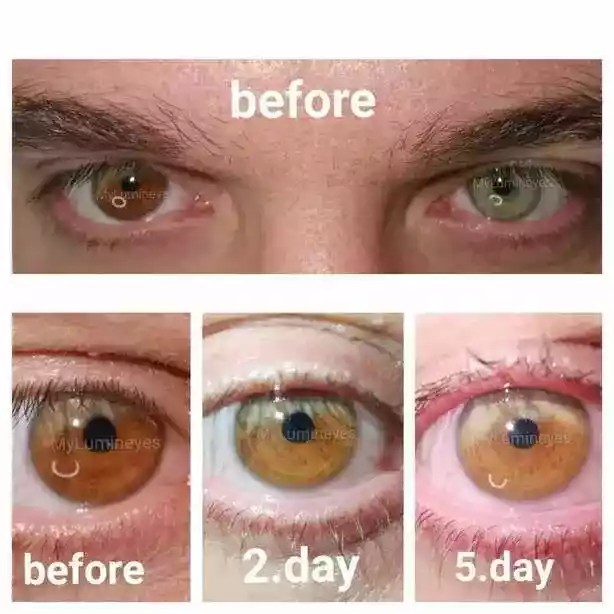
In addition, this condition will develop even as a result of an injury, illness, or medication. It is known as non-hereditary heterochromia.
It is usually caused by the following diseases-causes of Heterochromia
- Eye Surgery
- Iris Ectropion syndrome
- Eye injury
- Diabetes
- Glaucoma
- Posner-Schlossman syndrome
- Iris tumor
- Pigment Dispersion Syndrome
Abnormal iris darkness
Deposition of substance in eyes
Siderosis is the deposition of iron in the ocular tissues caused by a penetrating injury and a retained intraocular foreign body containing iron.
Hemosiderosis can be caused by prolonged hyphema (blood in the anterior chamber) as a result of ocular trauma.
Prostaglandin analogue eye drops-Latisse (latanoprost, isopropyl unoprostone, travoprost, and bimatoprost) are applied topically to glaucoma patients to reduce intraocular pressure. Some individuals who have taken these medications have developed concentric heterochromia. The stroma surrounding the iris sphincter muscle darkens relative to the periphery. It is assumed that iris melanocytes stimulate melanin synthesis.
Nevus-like neoplasms and melanomatous tumors.
Syndrome endothelial iridocorneal
Fuchs heterochromic iridocyclitis is characterized by low-grade, asymptomatic uveitis in which the iris of the affected eye becomes hypochromic and pale, resembling moth damage. Heterochromia can be quite subtle, particularly in patients with lighter iris pigmentation. It is typically most visible during the day. Several studies have attempted to determine the frequency of Fuchs-related heterochromia. The results indicate that people with dark eyes are less likely to notice iris color changes.
Acquired Horner’s syndrome is typically acquired, like neuroblastoma, but is occasionally inherited.
Additionally, neoplasm-melanomas may be very lightly pigmented, and a lighter-colored iris may be a rare indicator of metastatic disease to the eye.
resulting from tissue loss
Heterochromia has also been observed in Duane syndrome patients.
Chronic keratoconjunctivitis
Juvenile xanthogranuloma
Lymphoma and leukemia
How can we change eye color in people with heterochromia? Heterochromia Treatment with laser
The treatment for inherited heterochromia is contingent upon determining the primary reason behind the condition.
As we mentioned before, eye color change is achieved by using only laser in our clinic. Because this is the safest and most effective way is usin a Lumineyes laser to fix the colors. With the unique effectiveness of the “8G laser” and the experience of Dr.Mete, we can successfully change eye color. Heterochromia treatment with Lumineyes laser is very easy and has a high success rate. Laser can change your eye color from most common eye color (brown) to green eye color or grey eye color.
Only Mylumineyes clinic in the worldwide offers Heterochromia Treatment with Laser.
Types of Heterochromia
Acquired heterochromia is when the disorder develops thereafter in life due to injury, sickness, or medicines. Also known as heterochromia iridis and heterochromia iridum. Sometimes the variation in color might appear very subtle and may only be discernible under specific illumination conditions. While there are alternative variations, most people are generally classified as having 3 types of heterochromia.
1-Central Heterochromia
It is a typical type of heterochromia which causes change in eye color centrally. These people have completely different colors in the corners of their eyes. Near the corners of the pupils, there is a golden hue, and the rest of the iris is a special color. The presence of numerous pigments in a single eye is known as central heterochromia. It is possible for it to produce a visual irregularity that originates from the pupil, which is located in the middle of the eyes. This condition can be brought on by an irregular concentration of pigment in the lens of your eye.
2-Complete Heterochromia
In this type of situation, people have completely different colored eyes. For example, one may be brown-hazel eye and the other blue eye. When the iris of one eye is a different color than the iris of the other eye, a condition known as complete heterochromia exists. This condition is also referred to as heterochromia iridis. Complete heterochromia describes a situation in which a person’s irises are completely different colors from one another.
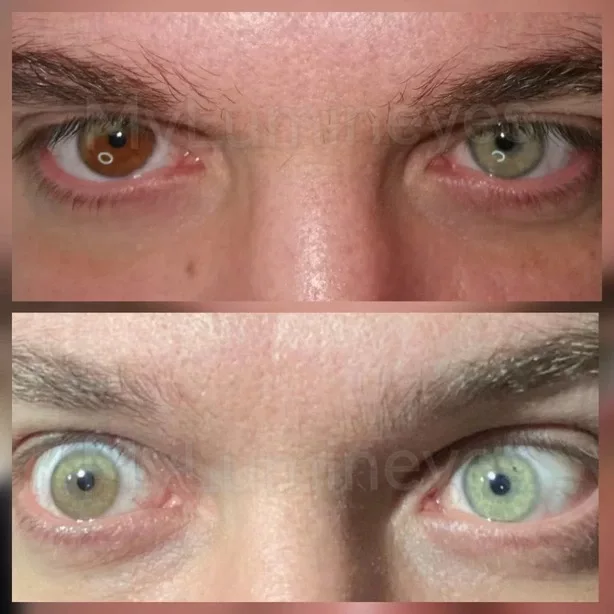
3-Sectoral or Segmental Heterochromia
Another type of heterochromia is segmental. In this case, a larger part of the iris is affected. This will develop in each eye, or exactly one eye. An irregular spot on the iris is referred to as sectoral heterochromia.It does not form a circle around the iris. There are a few different names for the condition known as segmental heterochromia. Some of these names include heterochromia iridum, sectoral heterochromia, and incomplete heterochromia. It takes place when different parts of the same iris have different amounts of pigment.
For instance, a person could have blue eyes that have brown flecks in them or brown eyes that have a speck of green in them. It’s possible that someone with this form of heterochromia will have the appearance of having spots or flecks in their eyes. Although it is not always apparent, the pattern has the potential to be very fascinating. If you don’t examine very closely, you might miss the segmental heterochromia that’s present.
Heterochromia identification or diagnose
Heterochromia is easily identifiable, as it pertains to a change in the color of one or both eyes. Unless an trauma or medical problem is the cause of heterochromia, no additional signs are typically noticeable. Schedule an eye specialist appointment if you acquire heterochromia or if your hereditary heterochromia has shifted in expression.
Is there a link between color blindness and heterochromia?
No, the two are completely different anamolites.
Is it possible to treat different types of heterochromia?
Yes, we apply the best type of Lumineyes Xtra laser eye color change method with great success for the treatment of almost all types of heterochromia. After successfully completing the treatment of the first heterochromia case in the world, we performed dozens of successful heterochromia treatments in our clinic.

